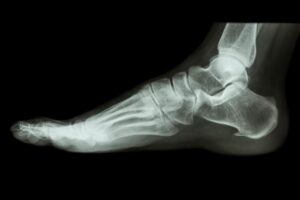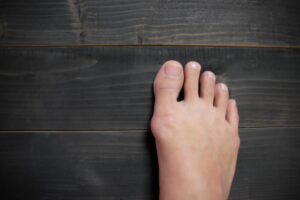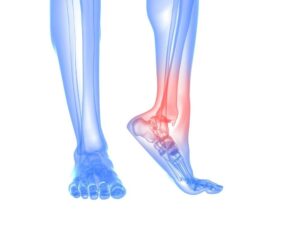Ankle Sprain and the Road to Recovery

Ankle Sprains and the Road to Recovery
If you have sustained an ankle sprain, it should always be evaluated by a specialist. Roughly 85% of the ankle ligament reconstructions I perform are on patients who neglected their initial injury and thought it would get better on its own. The fact of the matter is this, these ligaments that are damaged are seat belts stabilizing the ankle joint. You got in a bad car accident, and still aren’t wearing a seat belt. The concept is simple, your ankle joint needs to be protected and rehabbed!
The majority of ankle sprains, even severe ones are treated conservatively. The body will heal, but the key is to provide the ligaments support during primary healing, and then quality functional rehabilitation during the later stages of recovery. It has been well documented in scientific literature that early functional mobilization for soft tissue injuries is a key predictive measure to outcomes. The ligament is filled with proprioreceptors, which is the biofeedback to your brain of where your ankle is in space. During physical therapy all of the dynamic activities are designed to retrain your ligament on its function. You have to teach it to be a functional seat belt again. This is the key for quality recovery, and re-injury prevention.
The patients that sustain repetitive ankle sprains, or that do not complete functional rehabilitation, are the patients that end up with chronic ankle instability, and ultimately require ligament reconstruction. Very important to treat is right the first time, and hopefully avoid a potential surgery!
If you have sustained an ankle sprain, or feel like your ankle is weak and gives out frequently, give us a call for an evaluation!
You Might Also Enjoy...
The Achilles Heel
Given Arizona’s climate, patients are able to remain active year round. It’s why we all chose to live here. But…
Alleviating Back Pain and Other Benefits of Custom Orthotics You Didn’t Know About
Would you ever imagine that custom foot orthotics could improve your quality of life? That’s what many people say after…
9 Helpful Tips to Prepare Your Home Before Bunion Surgery
When moderate interventions, such as wearing wider shoes or using pads in your shoes, fail to ease your bunion pain…
When Should You Go to the Doctor for an Ingrown Toenail?
In most cases, you can nurse an ingrown toenail at home with over-the-counter pain medication, topical antibiotic creams, and soaking…
6 Home Exercises to Keep Your Ankles Strong
Ankles that feel wobbly and weak are vulnerable to injury. If you play sports, run, jump, or just walk often,…
Is Surgery My Best Option For Treating Bunions?
You have a bunion and it isn’t pretty, but if your bunion is small enough, or doesn’t hurt, you may…






